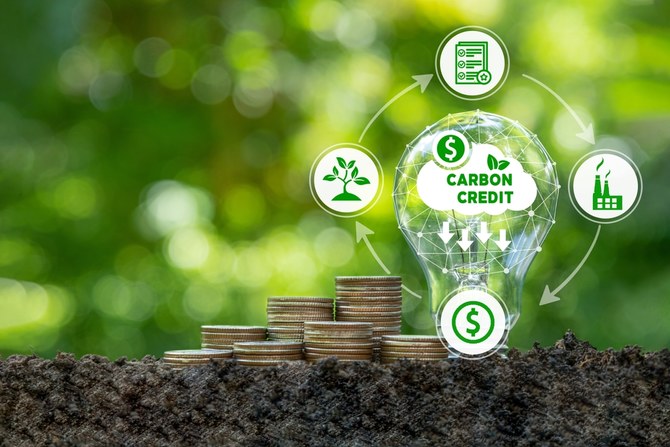Investing in Carbon Credits: Navigating the Emissions Market

Investing in carbon credits as a trade for cash is gaining traction as a safe investment to combat climate change and support decarbonization. The emissions trading market, a carbon marketplace, has evolved since its inception in the 1990s, allowing companies to buy and sell carbon credits that represent a reduction in greenhouse gas emissions through a carbon crediting platform, supported by a voluntary carbon markets integrity initiative and including carbon offsets. This market offers opportunities for investors looking to make a positive impact through carbon credit initiatives while potentially earning returns from carbon credit investments. Understanding how to navigate this fragmented carbon compliance market and voluntary carbon market ecosystem, along with the voluntary carbon market integrity initiative, is crucial for success. With growing awareness of environmental issues, now is the time to explore the benefits and challenges of investing in carbon credits and ets.
Key Takeaways
- Educate Yourself: Take time to understand what carbon credits are and how they function within carbon markets to make informed investment decisions.
- Research Market Trends: Stay updated on the latest trends in emissions trading markets to identify the best times to invest and maximize your returns.
- Diversify Investments: Consider various methods for investing in carbon credits, such as purchasing credits directly or investing in ets funds that specialize in this area, to spread risk.
- Assess Costs Carefully: Evaluate the safety and costs associated with different investment options in the carbon market to ensure you are making financially sound choices for ets.
- Implement Risk Management Strategies: Use strategies like setting investment limits and regularly reviewing your portfolio to minimize risks while investing in carbon credits and ets.
- Focus on Long-term Benefits: Remember that investing in carbon credits and ets not only helps the environment but can also lead to significant long-term financial benefits as demand for sustainable practices grows.
Understanding Carbon Credits
What Is A Carbon Credit
Carbon credits are transaction instruments in carbon markets. They represent one tonne of CO2 reduced or removed from the atmosphere in the carbon market under the ETS. Verified carbon credits help offset emissions and support nature restoration projects. Companies buy these credits to meet regulatory requirements or enhance their sustainability efforts.
How Carbon Credits Mitigate Emissions
Carbon credits incentivize emission reductions by assigning a monetary value to carbon savings. This system encourages businesses to invest in cleaner operations. Funds from carbon credit sales support renewable energy, reforestation, and other eco-friendly projects. By investing in quality carbon removal credits, companies can contribute to a healthier planet while improving their public image.
Why Invest In Carbon Credits
Investing in carbon credits allows businesses to address unavoidable emissions effectively. The carbon credit market is growing rapidly, valued at USD 103.8 billion as of 2023. This growth presents significant financial opportunities for investors. Purchasing trustworthy CO2 removal credits may offer tax deductions. However, the primary goal remains supporting climate action and promoting sustainable practices.
Overview of Carbon Markets
Types of Carbon Markets
Carbon markets are divided into two main types: Emissions Trading Systems (ETS) and the Voluntary Carbon Market (VCM). ETS are mandatory and regulated by governments. They require companies to adhere to specific emissions limits. In contrast, VCM allows businesses and individuals to voluntarily purchase carbon credits for climate actions.
Various greenhouse gases are mitigated through these markets. The primary gas is carbon dioxide (CO2), but others include methane (CH4) and nitrous oxide (N2O). These gases contribute to climate change, making their reduction crucial.
Voluntary vs Compliance Markets
Compliance markets operate under strict government regulations. They enforce policies that require companies to reduce their emissions. Failure to comply can result in penalties.
Voluntary markets offer flexibility. Companies or individuals can buy credits even if they aren’t legally required to do so. This option attracts those who want to demonstrate commitment to sustainability. Motivations include enhancing corporate reputation or meeting personal environmental goals.
Participants in voluntary markets often seek carbon management options that align with their values. Engaging in these markets fosters a sense of responsibility toward the environment. It also contributes to funding carbon projects that promote sustainability.
Methods for Investing in Carbon Credits
Buy Directly from Projects
Purchasing carbon credits directly from emission reduction projects is a straightforward method. Buyers can support specific initiatives, like reforestation or renewable energy. This direct approach allows investors to know exactly where their money goes. However, due diligence is essential. Researching project credibility ensures that the investment truly makes an impact on emissions.
Use a Broker
Brokers play a crucial role in facilitating carbon credit transactions. They provide access to a wider range of carbon investment options and market expertise. Using a broker can simplify the buying process and help investors navigate complex regulations. Choosing reputable brokers is vital to avoid fraud and ensure a safe transaction.

Buy from a Retailer
Carbon credit retailers serve as middlemen in the market. They sell pre-verified credits, making it easier for buyers to invest. This option offers convenience but may come with higher costs compared to direct purchases or broker services. Buyers should weigh the benefits against potential expenses.
Buy from an Exchange
Carbon credit exchanges operate similarly to stock exchanges. They provide transparency and liquidity for buying credits. Investors benefit from standardized pricing, which helps reduce transaction costs. Exchanges also offer real-time data, making it easier to track market trends.
Evaluating Investment Safety and Costs
Are Carbon Credits Safe Investments
Investing in carbon credits carries risks. Market volatility can affect the value of credits. Prices may fluctuate based on supply and demand. Verifying credits through recognized standards like Gold Standard and VERRA is crucial. These organizations ensure the integrity of the credits. Thorough research and risk assessment are necessary before making any investment.
Beginner-Friendly Carbon Credit ETFs
Exchange-Traded Funds (ETFs) focused on carbon credits provide a good entry point for new investors. They offer diversification, which reduces risk by spreading investments across multiple projects. ETFs simplify the investment process, making it easier to buy and sell. Popular carbon credit ETFs include the Invesco Global Clean Energy ETF and the iShares Global Clean Energy ETF. These options help beginners gain exposure to the market.
Costs of Investing in Credits
Investors should consider various costs when purchasing carbon credits. Transaction fees can add up, along with verification costs for ensuring credit authenticity. Price fluctuations in the carbon credit market also impact overall expenses. Budgeting and financial planning are essential steps to avoid unexpected costs. Understanding these factors helps in managing investments effectively.
Minimizing Risks and Maximizing Benefits
Importance of Environmental Investment
Investments in carbon credits play a critical role in combating climate change. They promote sustainability by funding projects that reduce greenhouse gas emissions. These investments can drive innovation in green technologies. For example, funding renewable energy sources leads to cleaner air and reduced reliance on fossil fuels. Supporting projects that restore ecosystems also has long-term benefits. Healthy ecosystems provide clean water and support biodiversity.
Limits of Carbon Credits
Carbon credits cannot solve the climate crisis alone. Relying too heavily on them may lead to neglecting actual emission reductions. Companies might purchase credits instead of cutting their emissions. This approach does not address the root causes of climate change. A comprehensive strategy is essential. It should combine emission reductions with effective use of carbon credits.
Lowering Investment Risks
Investors should diversify their portfolios across different types of carbon credits and projects. This strategy helps spread risk and enhances potential returns. Thorough research is crucial before investing in any project or credit. Verification ensures that investments support genuine environmental efforts. Staying informed about market trends and regulatory changes is also important. These factors can significantly impact investment outcomes.
Final Remarks
Investing in carbon credits is a smart move for those looking to navigate the emissions trading market. You’ve learned about carbon credits, market dynamics, and how to evaluate risks and costs. With these insights, you can make informed decisions that not only benefit your portfolio but also contribute to a sustainable future.
Take action now. Dive into the carbon market and start exploring investment opportunities. Your choices can make a difference while potentially yielding significant returns. Stay informed, stay engaged, and be part of the solution.
Frequently Asked Questions
What are carbon credits?
Carbon credits represent a permit allowing the holder to emit a certain amount of carbon dioxide or equivalent greenhouse gases. One credit equals one ton of CO2. They incentivize companies to reduce emissions and support environmental sustainability.
How do carbon markets work?
Carbon markets facilitate the buying and selling of carbon credits. Companies that exceed emission limits can purchase credits from those who have reduced their emissions. This creates a financial incentive for reducing environmental impact while promoting market efficiency.
What methods can I use to invest in carbon credits?
Investing in carbon credits can be done through direct purchase, exchange-traded funds (ETFs), or carbon credit brokers. Each method varies in risk, liquidity, and potential returns, so choose based on your investment goals.
Are carbon credits a safe investment?
Like any investment, carbon credits carry risks. Market volatility, regulatory changes, and project legitimacy can affect their value. Conduct thorough research and consider diversifying your portfolio to mitigate risks.
What costs should I expect when investing in carbon credits?
Costs may include transaction fees, broker commissions, and potential management fees if using ETFs. Consider the price volatility of credits themselves, which can impact overall investment costs.
How can I minimize risks when investing in carbon credits?
To minimize risks, diversify investments across different projects and sectors. Stay informed about market trends and regulatory developments. Consider working with reputable brokers or advisors specializing in carbon markets to enhance your strategy.
What are the benefits of investing in carbon credits?
Investing in carbon credits supports environmental sustainability while potentially providing financial returns. It allows investors to contribute to climate change mitigation efforts while participating in a growing market focused on renewable energy and emission reduction.
 Send Buck a voice message!
Send Buck a voice message!



